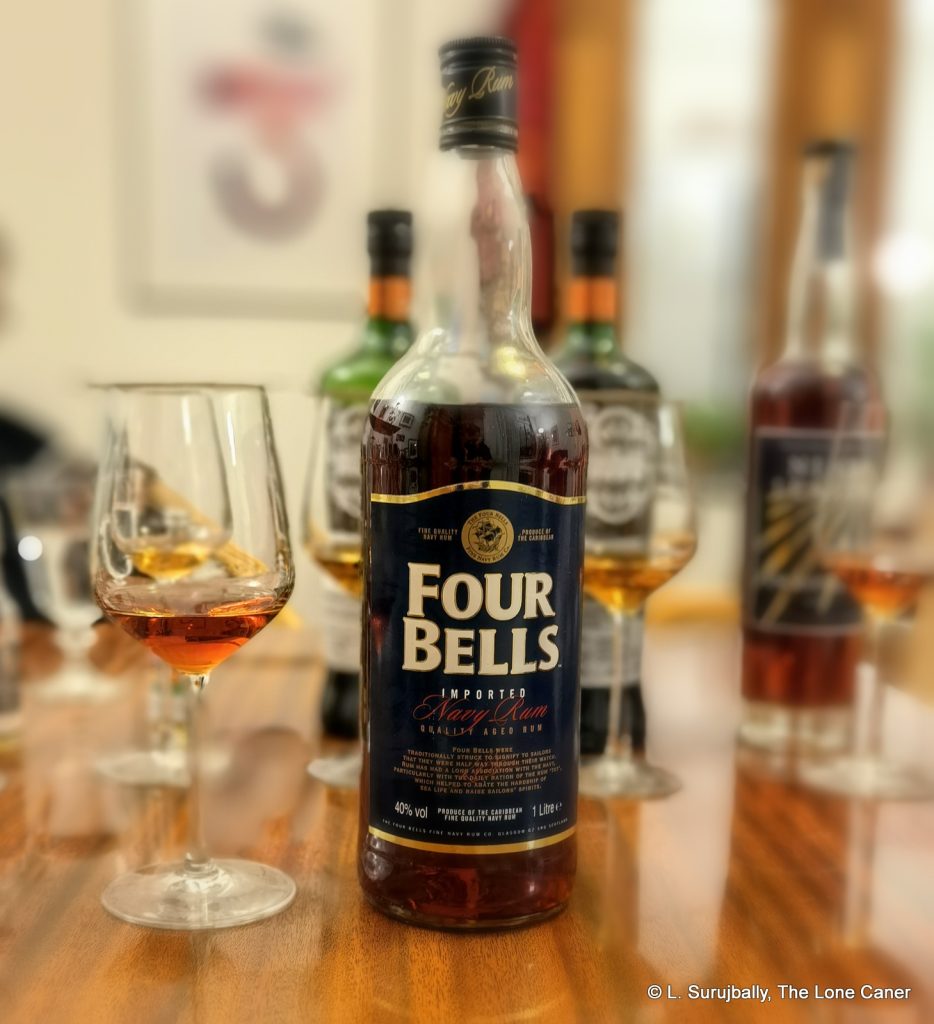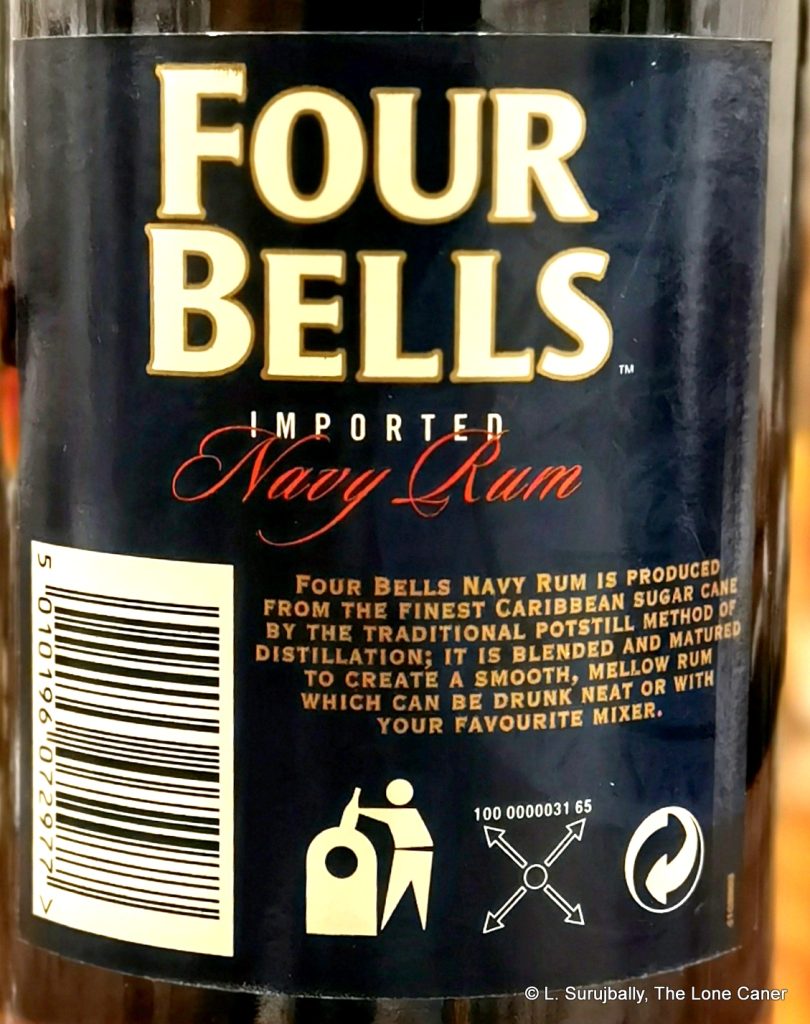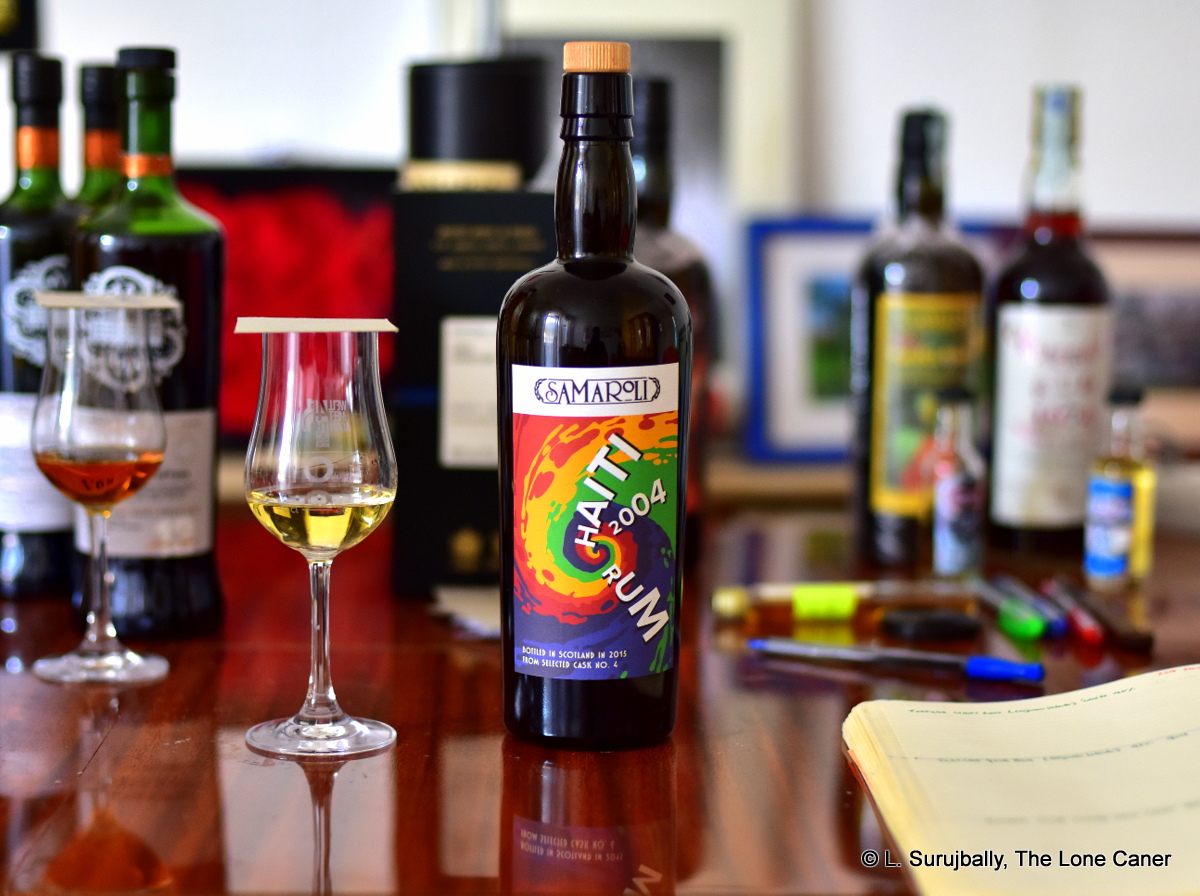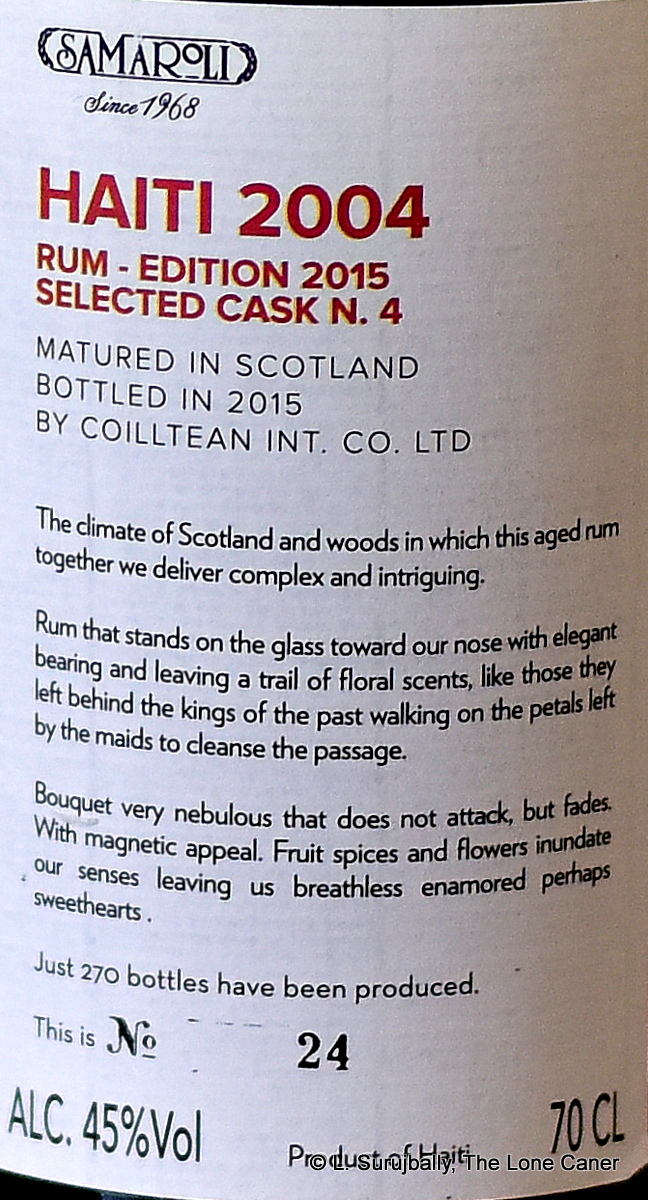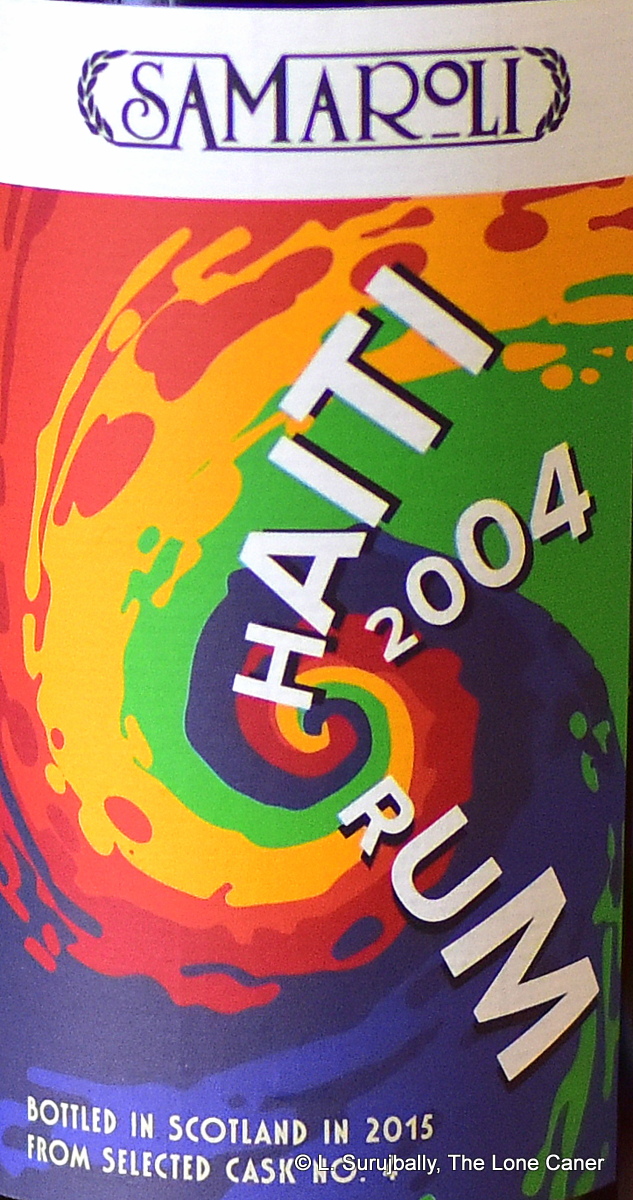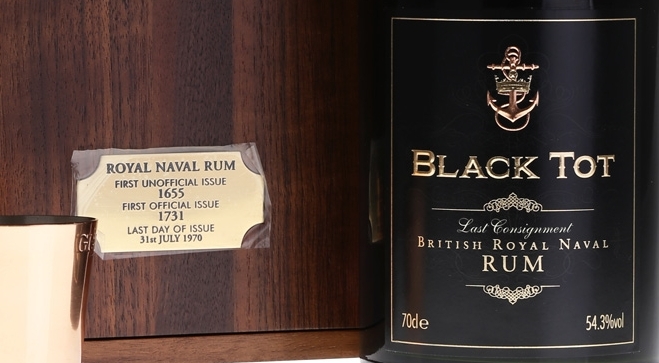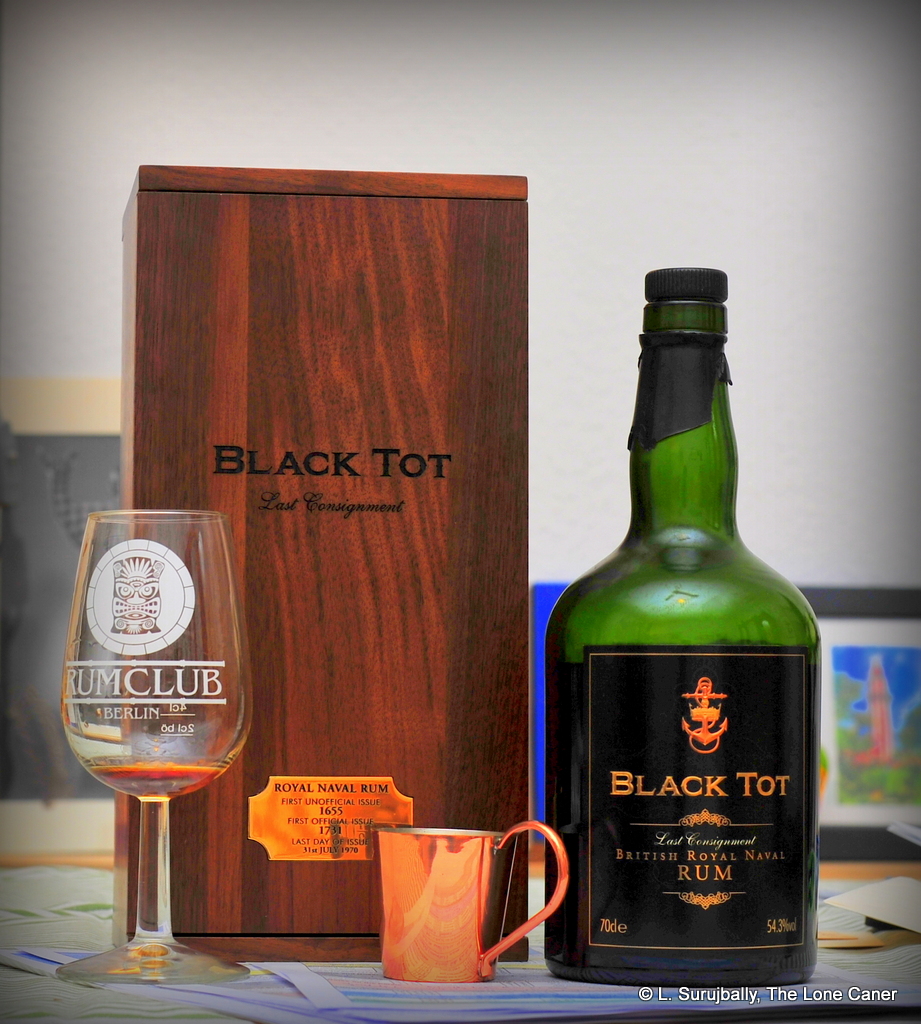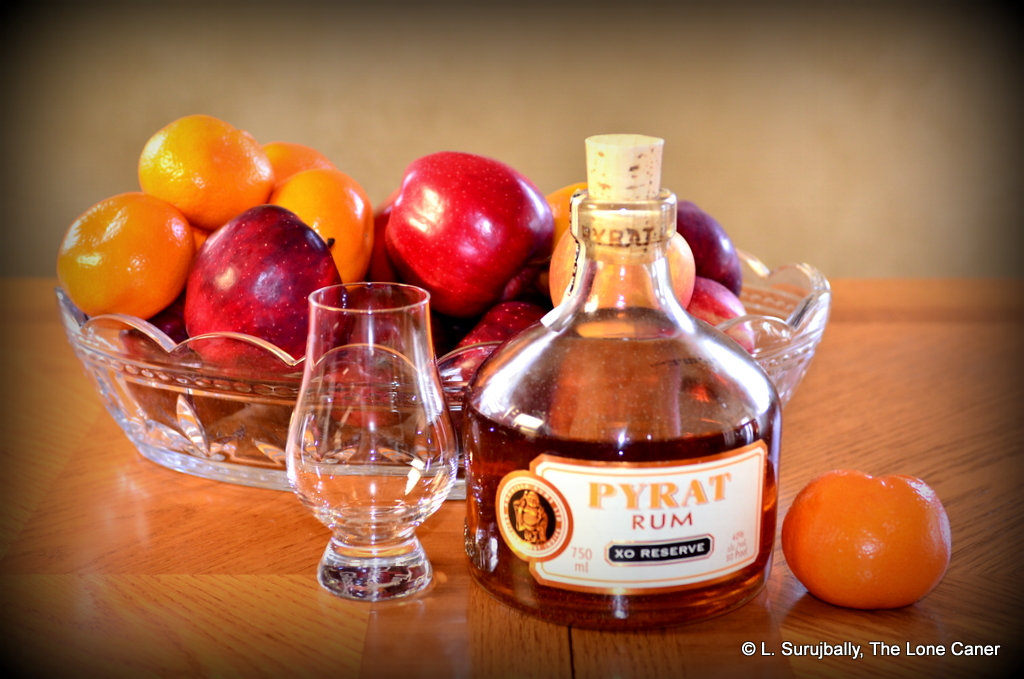Rumaniacs Review #135 | 0914
Disregard – actually, try to forget – the label for a moment, so that the word “Navy” doesn’t send you into conniption fits. It’s an advertising thing, and exists on that label for no other reason than to draw a line between the seafaring traditions of yore, and your mind — as if somehow, by buying and drinking the rum, you are instantly transported to a noble nautical heritage stretching back centuries, with sea spray in your face, snapping sails overhead, and you line up at four bells to get your tot. I guess that’s the rum part – sodomy and the lash go mercifully unexamined (though one does wonder when some courageous Navy-rum-maker wannabe will eventually go the whole tot on the label, so to speak…but I digress).
The rum is of course not a true Navy rum. That’s just marketing garbage; it’s a standard strength blend of unspecified Caribbean components which one website generously referred to originating from “the best sugar cane” and “from the Caribbean islands of Guyana” – the very thing that always soothes my suspicions about a brand and gives me the warm and fuzzies. It’s apparently made by a company called “The Four Bells Fine Navy Rum Co.” out of Glasgow which is almost untraceable. Consider it a contract-made third-party blend, no longer made, probably hailing from the island of Guyana. You can trust that. The label says so.
Colour – Dark gold
Strength – 40%
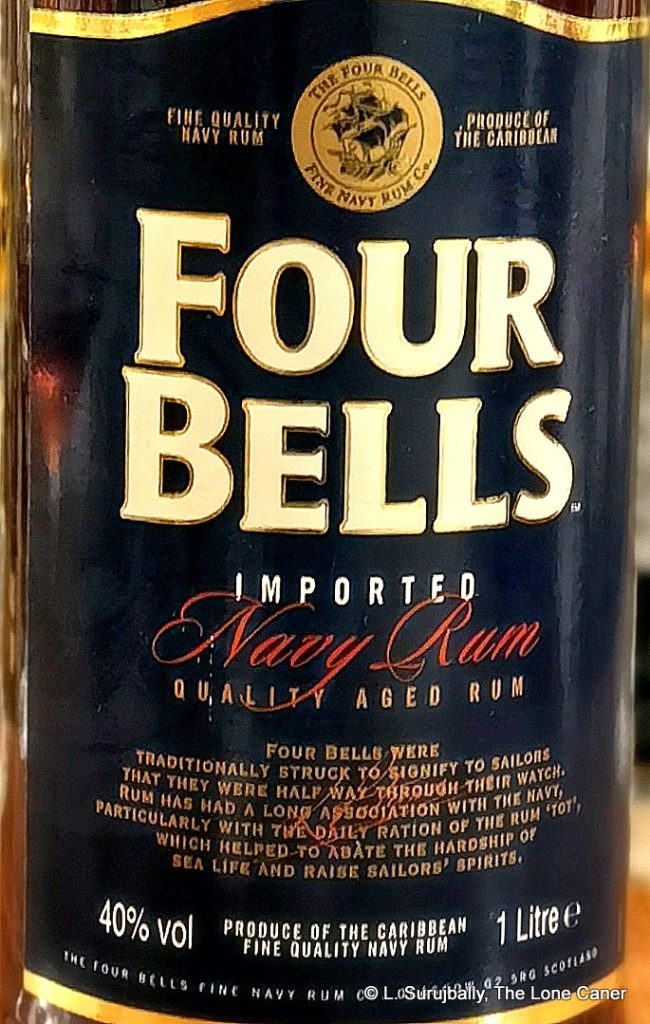 Nose – All the snark out of the way, I must confess it wasn’t half bad. It’s a dark brown rum, actually quite aromatic. There was molasses, wood, tannins, licorice and brine with a heavy, almost sulky attitude to the nose. Wet sawdust, caramel and honey, well-polished leather boots and some emergent lumber notes that kept getting stronger. Nothing new, nothing too complicated, lots of old faithfuls – this is almost like low-level spirituous comfort food.
Nose – All the snark out of the way, I must confess it wasn’t half bad. It’s a dark brown rum, actually quite aromatic. There was molasses, wood, tannins, licorice and brine with a heavy, almost sulky attitude to the nose. Wet sawdust, caramel and honey, well-polished leather boots and some emergent lumber notes that kept getting stronger. Nothing new, nothing too complicated, lots of old faithfuls – this is almost like low-level spirituous comfort food.
Palate – Again, good: warm and simple, Molasses, polished leather, dark cherries, raisins, licorice, a smidgen of sharper tannins and some sour citrus rind. By now I kind of had a bead on the thing, so was not surprised to taste additional notes of bitter chocolate, coffee grounds, toffee and molasses, clearly young, somewhat sharp. It reminded me of cheap Canadian mixers like Young’s Old Sam (a perennial favourite of mine).
Finish – Short, which is to be expected at 40%, a bit sweet and yet also dry, with closing points of pungent licorice, molasses and a very sweet caramel macchiato.
Thoughts – Bells is a rum that doesn’t need to be stronger, because for all its evident youth, it’s also heavy enough and has sufficient flavours to be tried neat. It is, in that respect, completely straightforward, and clearly not looking to break boundaries and redefine genres. It’s fine as it is, within its limits, but those limits are further restricted by the lack of information provided about the rum itself, and the company that makes it. Like it or not, few taste blind, and people do tend to rate a rum based on what they know about it…or not. Here we know nothing about the rum, the blend, or the maker – and if we can’t trust the information that is provided, if only on the label, then it makes us trust what we’re tasting less, much less, and there aren’t many who would buy a rum with that kind of cloud hanging over it.
(#914)(80/100) ⭐⭐⭐
- For what it’s worth, I think the blend is mostly PM out of Guyana. If there’s anything else in there, it’s a very small percentage. The back label notes it as being pot still, but who knows?
- In British Navy tradition, the strikes of a ship’s bell were not aligned with the hour. Instead, there were eight bells, one for each half-hour of a four-hour watch – four bells is therefore halfway through any one of the Middle, Morning, Forenoon, Afternoon, Dog or First watches (good that someone knew this, because naming it “eight bells” would have been unfortunate, being used as it was to denote end of watch” or a funeral).
- There are other Four Bells Rums — “Four Bells” as a title does not appear to have any trademark or copyright or owned brand associated with it: several firms have made use of the title — such as one I reviewed for the Rumaniacs (from the 1970s), or another that went up for auction released by Whyte & McKay;
- There remains no current references to Four Bells as a company, or the rum outside of auction sites and a few obscure online shops. It may just be a one off brand experiment into rum dating back many decades. Rum-X comments that its production ceased in the late 1970s / early 1980s.
- A stronger 50% version of the rum remarks that W&M have the Four Bells Fine Navy Rum Company as a subsidiary but that can’t be verified. If it is a subsidiary (they have the same address), Four Bells is not mentioned anywhere on its website or company profile, and W&M has so many other minor subsidiaries under its corporate umbrella (59) that it’s unfindable. Even the CEO’s linked in profile doesn’t tell you anything about Four Bells. White & MacKay itself does deal in spirits, and is currently a subsidiary of the Philippines-based Emperador Group which is part of Alliance Global Inc a diversified F&B/Hospitality/Real Estate conglomerate.
- I’ve sampled this out to some friends over the years, and quite a few really liked it. It’s not a waste of money, if you find it on some dusty store shelf at a cheap price and enjoy a Guyanese style of rum. I’d rate it on par with the ED-8 or -12, though maybe less complex than either.
